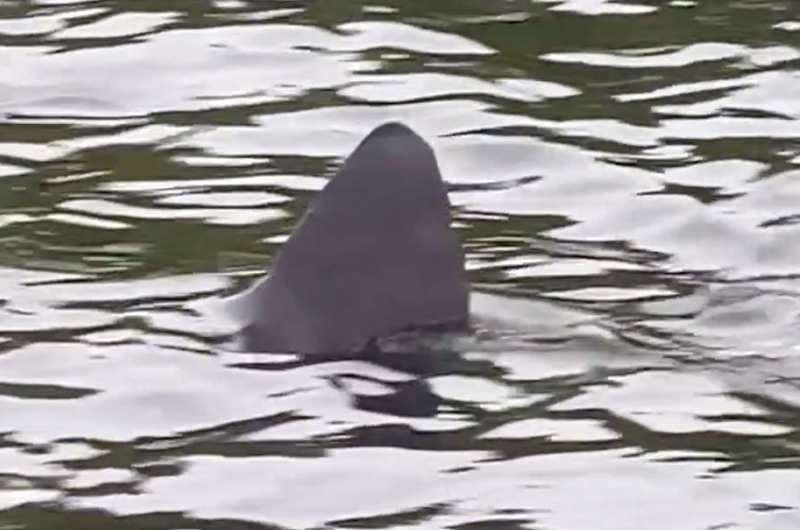The situation had come to a head. A big one.
David Stanwood and Nelson Sigelman saw and stewarded an ocean sunfish in Lake Tashmoo last week. Ocean sunfish, also called mola mola, look like a giant head with fins. The fish, whose fin juts above the water, could confuse less knowledgeable folks into thinking Jaws is back. Both men knew otherwise, having seen this creature often enough to know its identity and observe its distinctive sculling-style swimming.
Nelson, who is notoriously hard to impress, noted its big eye staring him down as he assisted the creature. It had gotten caught in the shallows near Hillman’s Point while finding its way to deeper waters.
Others also reported the floundering fish and helped it find its way back out to the Sound safely, avoiding injury and stranding. Both are common hazards for mola molas because of their size and structure. A network of researchers want to know about sightings and help stranded animals, so save the phone number (508) 566.0009 and the website address wwwnebshark.org for ocean sunfish sightings, stranding events, and a helping hand if needed.
This arresting creature boasts many morphological merits. Known for its large size, laterally-flattened shape and unusual side-swimming style, an encounter with a mola mola is more than memorable. The sunfish’s penchant for side swimming has led to its name. It seemingly basks in the sun but blame for its sideways style goes to the hordes of hitchhikers that inhabit its body. It has been estimated that more than 50 species of parasites live on or inside mola molas. Floating near the surface provides relief from the freeloaders when sea birds pick them off for a snack. Mola molas can be as tall as they are long and are one of the heaviest bony fish around. Adults weigh in at 500 to over 2,000 pounds. The larger ones are about the mass of a car. Even with this bulky body, mola molas can dive deep, up to 2,000 feet, assisted by the fact that they don’t have a swim bladder for buoyancy. Sunfish also claim another title for their fertility. These fertile myrtles are the most fecund vertebrate, sending out 300 million eggs at each spawning event. Baby mola molas are fascinating pin-head sized, star-shaped creatures that grow quickly and effectively to 60 million times larger as adults than they were at birth.
Their struggles are not only in the shallows; they fall prey to predators and humans alike. Sharks and whales eat mola molas but humans may be their ultimate threat. Recent studies show that the population of mola molas has declined about 30 percent in three generations. Fishing (as by-catch in trawls and gill nets) and boat strikes might be to blame for some of their decline.
Those that spend time on and around the water can be allies and friends to this striking species. This particular sunfish was determined to be a juvenile, perhaps still finding its way in life. Luckily, even with its wrong turn into the shallows of Tashmoo, it was rescued and, appropriately enough, given a new head start in life.
Suzan Bellincampi is director of Felix Neck Wildlife Sanctuary in Edgartown and the Nantucket Wildlife Sanctuaries.





Comments (1)
Comments
Comment policy »